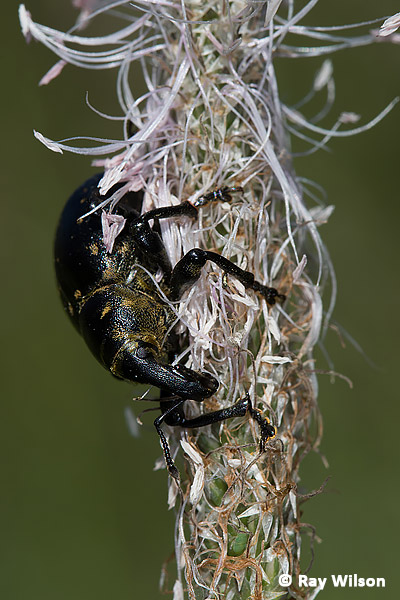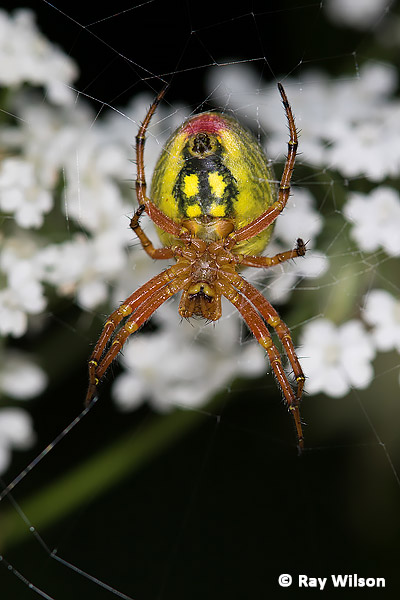
- Home
- Photography Tours
- Diary / Blog
- Galleries
- Foreign Trips
- Tasmania 2016
- NE Queensland 2016
- Western Alps 2016
- NE Spain 2016
- Australia's Wet Tropics 2015
- Australia's Top End 2015
- SW Australia 2015
- Switzerland 2015
- Andalucia 2015
- Belize 2015
- Australia 2014
- Switzerland 2014
- Belize 2014
- Bahama Islands 2014
- Switzerland 2013
- Ecuador 2012-2013
- Florida 2011-2012
- Vancouver Island 2011
- Australia 2010
- Peru 2008
- Bulgaria 2007
- Lesvos 2006
- California 2006
- New Zealand 2005
- Extremadura 2005
- Goa, India 2004
- The Gambia 2003
- About
Switzerland
June/July 2015
Part 3 : Non-Lepidopteran Arthropods of Valais & Graubunden
Although I was primarily searching for butterflies most of the time, I inevitably also found many other interesting arthropods during my wanderings in the mountain meadows of the Swiss Alps. A small selection of some of the non-Lepidopteran insects and spiders I encountered is shown below...
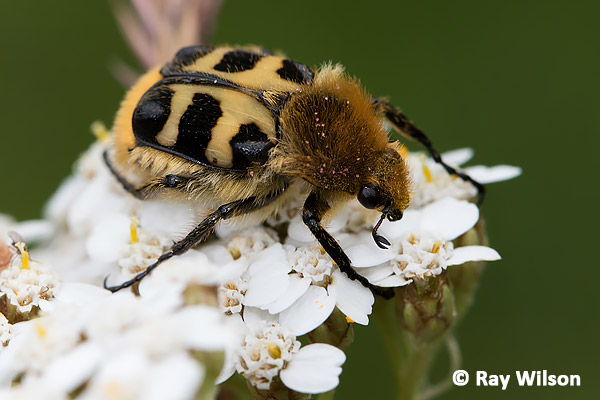
Bee Beetle (Trichius sp.)
The yellow and black markings on the elytra of the large, chunky beetle shown above instantly identifies it as one of the Bee Beetles. That's the easy part...identifying it to species is more problematic as there are several very similar species within this subgroup of the scarab (Scarabaeidae) beetles.
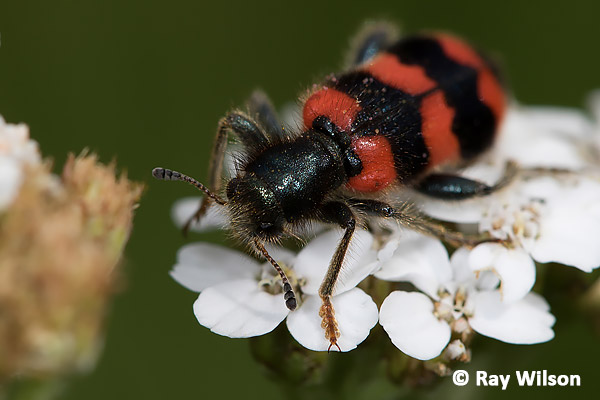
Bee-hive Beetle (Trichodes alvearius)
Trichodes alvearius gets its common name from its habit of laying its eggs in the nests of hymenoptera where its larvae prey on the various life-stages of the bees or wasps within the nest. Adults primarily feed on pollen but also supplement their diet by preying on other insects. The black line down the centre of the elytra distinguish it from its very similar cogener T. apiarius.
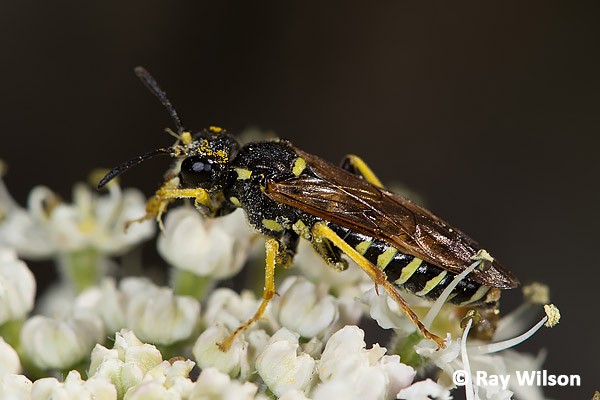
Sawfly sp. (Symphyta)
Sawflies are easily separated from the Apocritan hymenoptera (bees and wasps) by the lack of a "waist" formed by a constriction between the thorax and abdomen. This lack of a waist generates a characteristic straight bodied appearance such as that seen in the sawfly in the photo below. The pectinate antennae of this individual is a feature that separates the Megalodontesidae (formerly named Megalodontidae) from members of the similarly flat-bodied Pamphiliidae sawflies.
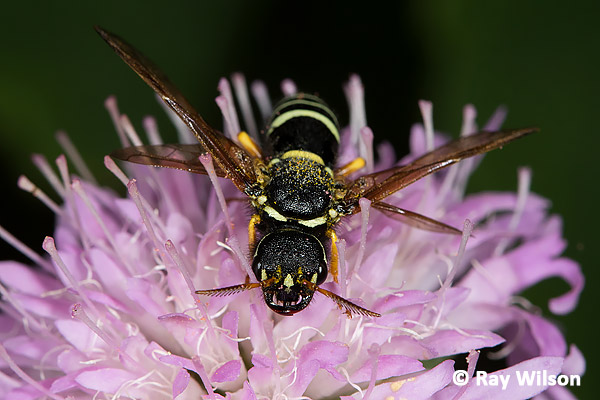
Sawfly sp. (Symphyta : Megalodontesidae)
Among the European assassin bugs (Reduviidae) only the genus Phymata have enlarged femora on the raptorial frontlegs.
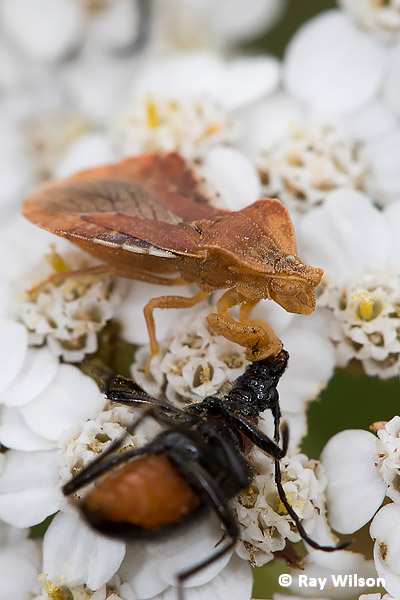
Phymata crassipes (Hemiptera : Reduviidae) |

Leaf Beetle (Chrysomelidae)

Northern Dune Tiger Beetle (Cicindela hybrida)
Horseflies were very common in some locations, particularly in areas where cattle were grazing nearby. Thankfully most of the species didn't seem to be particularly anthropophilic and they only occasionally made a nuisance of themselves by trying to bite me.

Horsefly (Tabanidae)
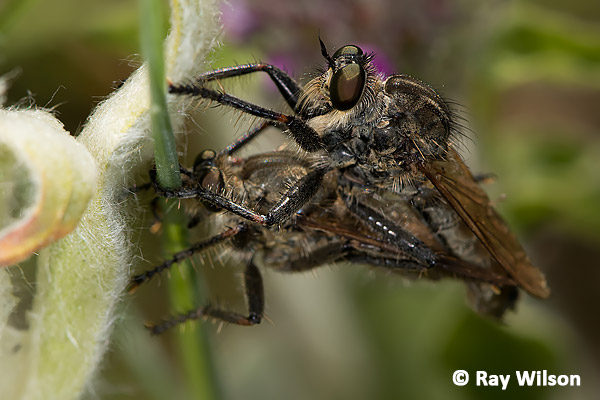
mating Robberflies (Asilidae)
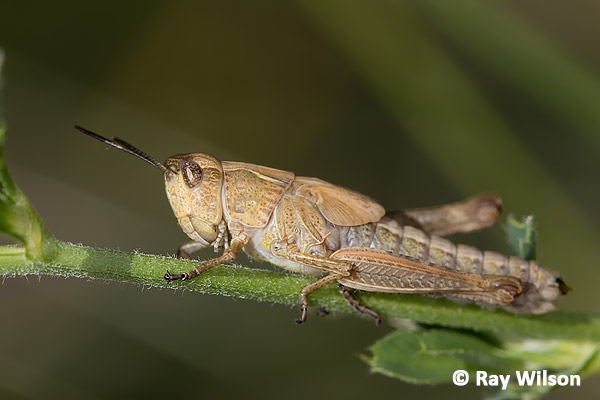
Grasshopper (Orthoptera)
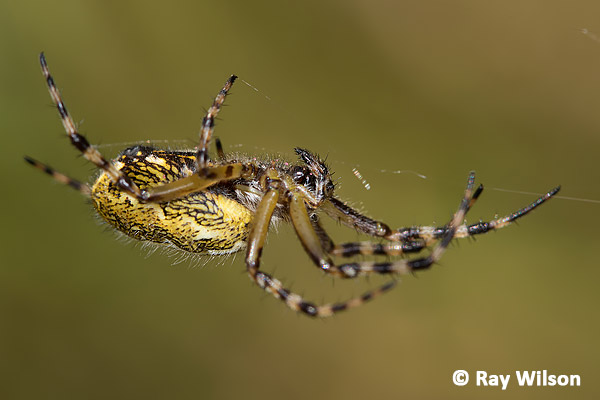
Aculepeira ceropegia
One of the most striking and easiest to identify spiders in Switzerland is Aculepeira ceropegia. It is commonly known as the Oak Spider due to the oak-leaf pattern on its abdomen.
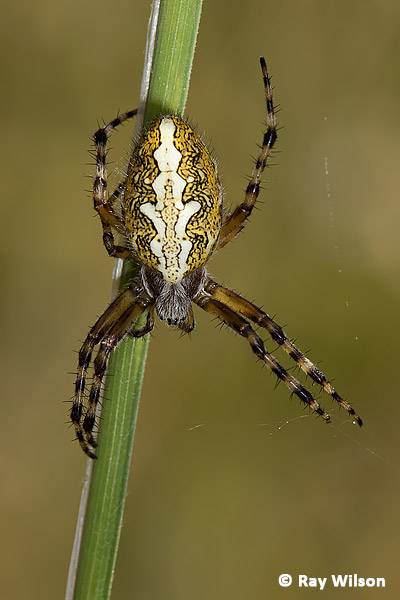
|

|
Aculepeira ceropegia
Another beautiful little spider is Araniella alpina. This is one of 6 species of Araniella spiders that occur in Europe. All are very similar and a close examination of the epigyne or male palpal organs is required to conclusively identify them to species.
Araniella alpica
Ray Wilson owns the copyright of all images on this site.
They may not be used or copied in any form without prior written permission.
raywilsonphotography@googlemail.com
